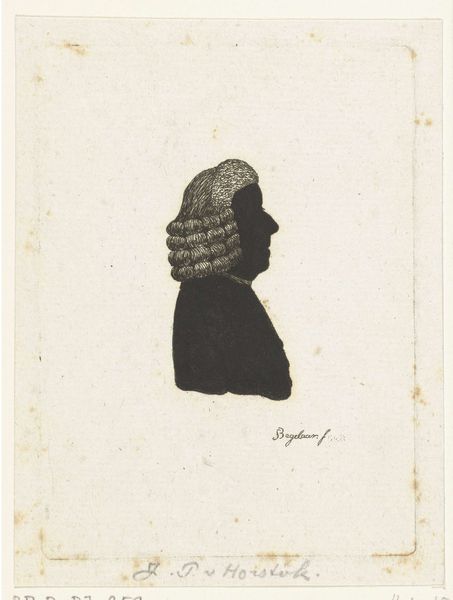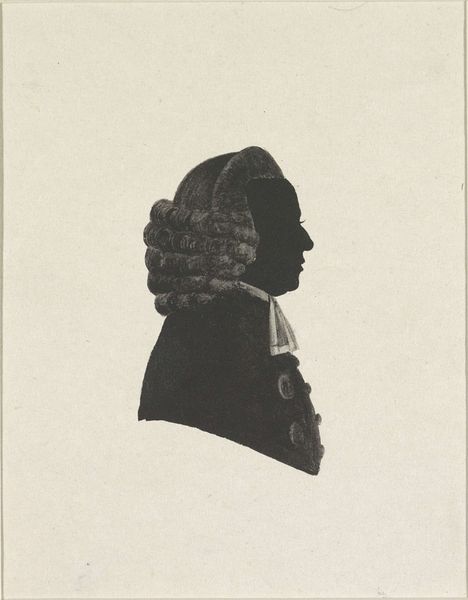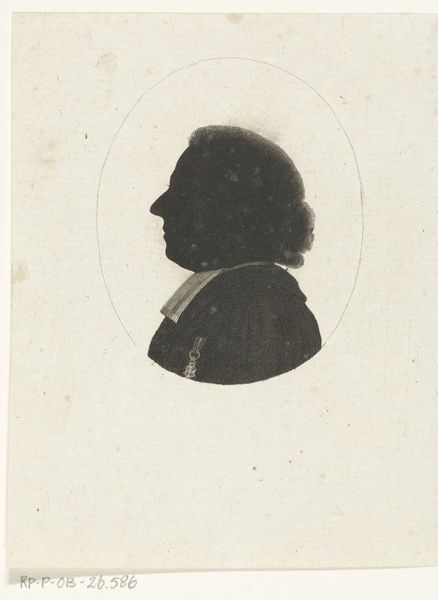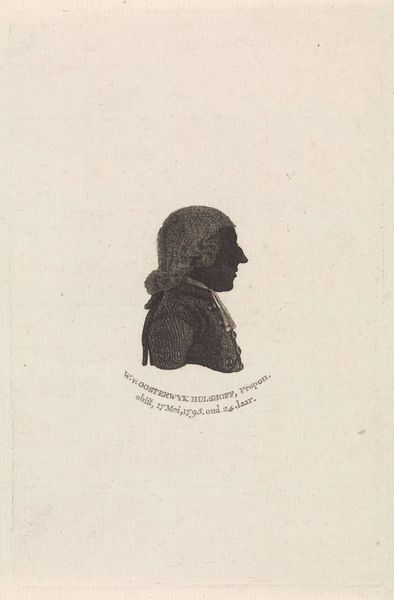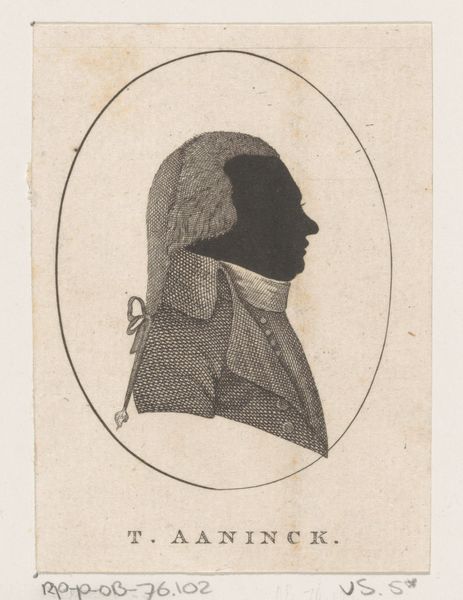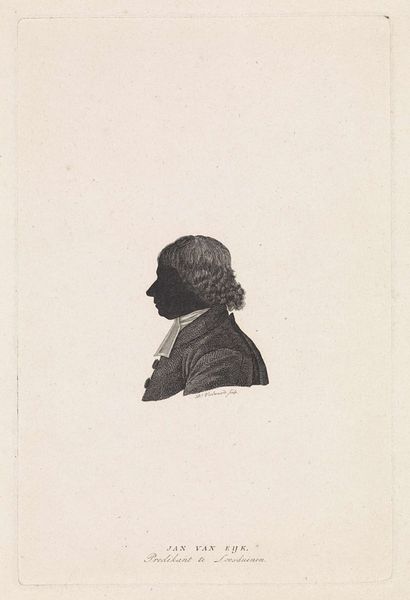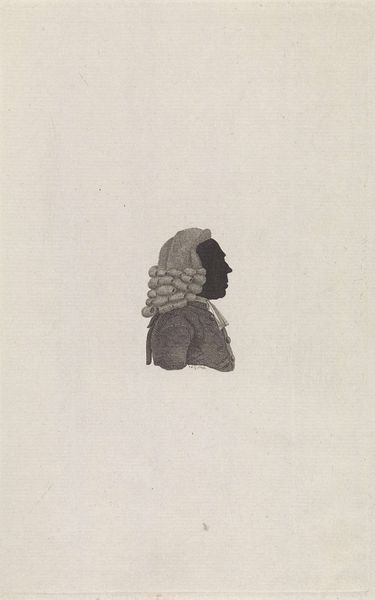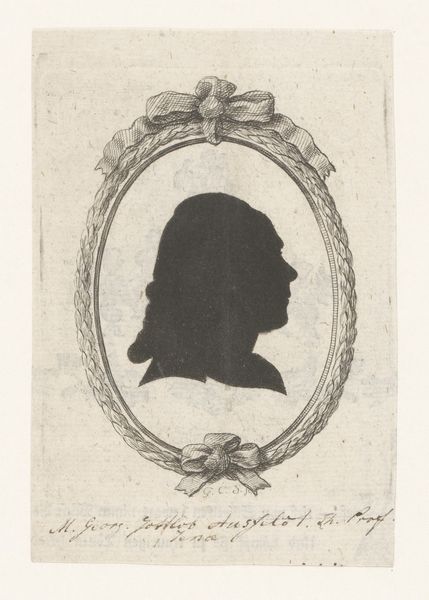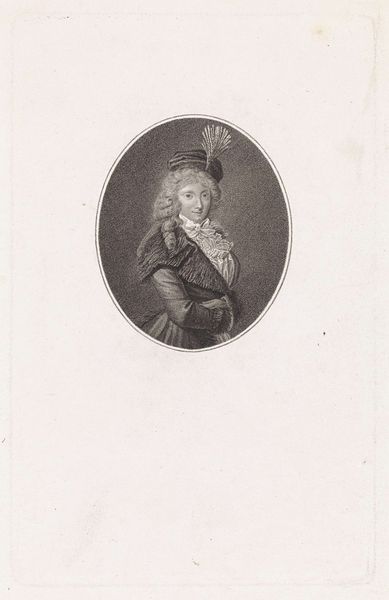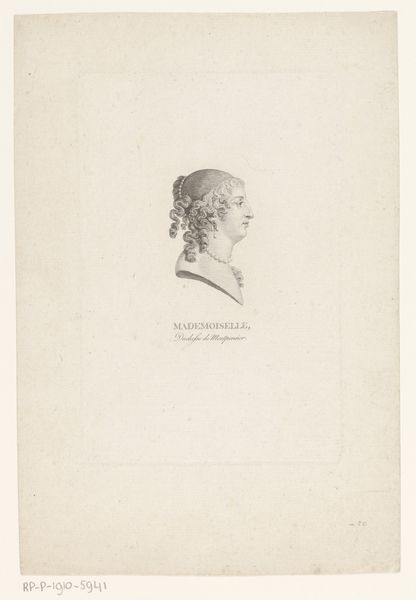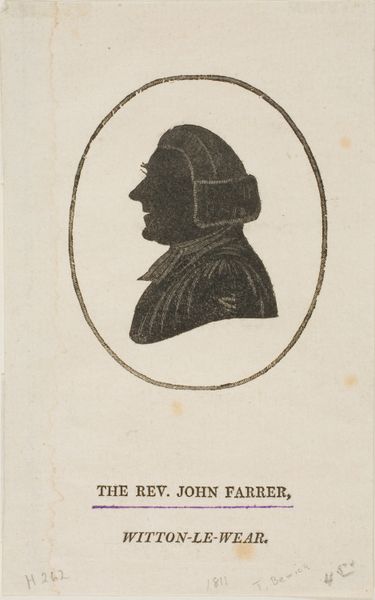
drawing, pencil
#
portrait
#
pencil drawn
#
drawing
#
neoclassicism
#
pencil sketch
#
pencil drawing
#
pencil
Dimensions: height 196 mm, width 143 mm
Copyright: Rijks Museum: Open Domain
Editor: Here we have "Silhouetportret van Franz Georg Christopher Rütz," dating from 1765 to 1837, housed right here at the Rijksmuseum. It’s a pencil drawing, a silhouette really. I’m struck by the stark contrast and the detail in the wig and jacket, and its connection to societal conventions. What do you see in this piece? Curator: Beyond the visual aspects, I see this portrait as a window into the social structures and power dynamics of the 18th century. Consider the wig – not just a fashion statement, but a symbol of status, profession, and belonging to a particular societal stratum. How does the silhouette format itself contribute to a conversation about identity and representation? Editor: That’s a good point. The lack of specific facial features seems to almost universalize the image, even though it’s an individual portrait. Is it commenting on the uniformity expected within certain social classes at the time? Curator: Precisely! It prompts us to think about the ways individuals were both celebrated and constrained by their social roles. This was a period defined by strict codes of conduct, and portraiture like this, while ostensibly commemorating the individual, also reinforced those codes. Moreover, think about the rise of the bourgeoisie and how portraiture became increasingly important for this class in asserting its identity. Where do you think this portrait fits within this narrative? Editor: So, it's about more than just likeness. It is a statement. Looking at it now, it really encapsulates a particular moment in social history. I didn't consider that initially, I must admit. Curator: And that's precisely the point, isn't it? Art allows us to connect with the past but also to critique it. We must always question what the artwork signifies and who benefits from its representation.
Comments
No comments
Be the first to comment and join the conversation on the ultimate creative platform.

